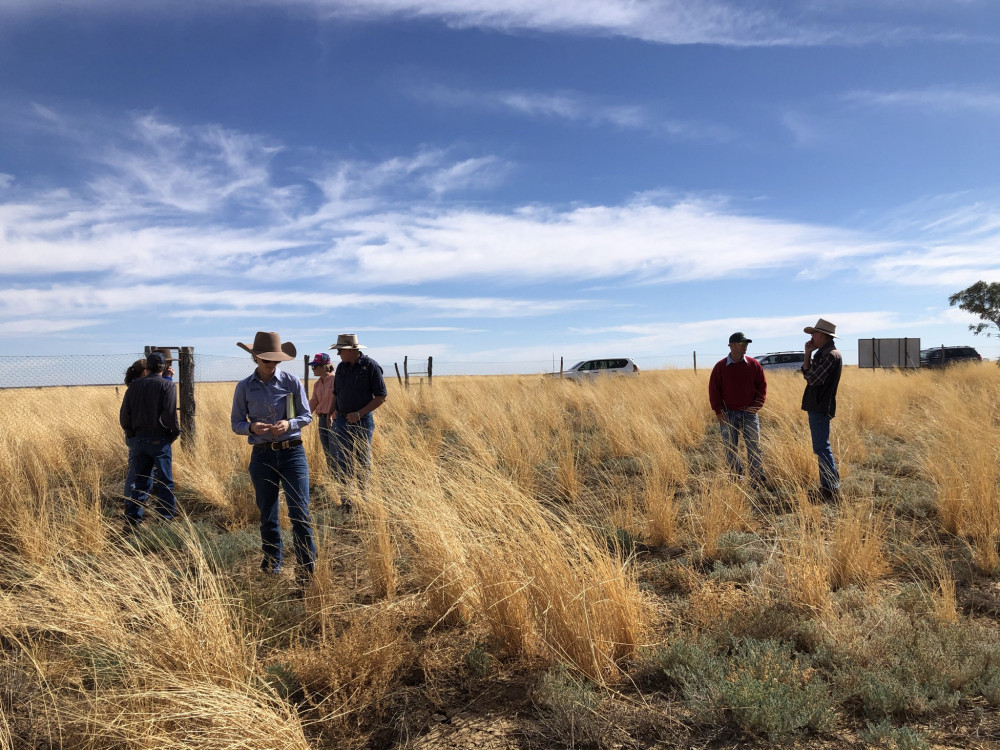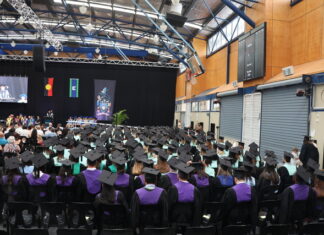
FARMING practices are being revolutionised by technology, and one project, helmed by a conglomeration of interests is aiming to help ease the transition.
This year, a meeting was held by E-Beef Project Officers Leanne Hardwick from the Department of Agriculture and Fisheries, and Kate Paterson from Desert Channels.
The E-Beef Project is a three-year project that aims to support primary producers with new technologies that assist with farm work.
Ms Paterson said the meeting was about getting all of the landholders together to have a social and learning experience.
“It’s about giving them a chance to see something new,” she said.
“[It was also the first time] members from both the Isisford and Muttaburra groups came together.”
Ms Paterson said E-Beef aims to demonstrate how primary producers can utilise technology to access their property’s current pasture data and cattle live-weight data.
“Landholders can see first-hand how decision-making using this data can further affect their land, livestock, and business’’ profitability,” she said.
The E-Beef project looks to tackle issues of animal production, business profitability but also to ascribe the importance of pasture management, animal performance, and marketing to business resilience.
Ms Paterson said the project is supported by a partnership comprising Southern Gulf NRM, Desert Channels Queensland, Northern Gulf RMG, and Queensland Department of Agriculture and Fisheries (DAF).
“Funding for the project is from the Australian Government’’s National Landcare Program and the Queensland Government Drought and Climate Adaptation Program,” she said.
As a part of the E Beef project, according to Ms Paterson, out of each of the three regions, two smart farms were chosen in 2019 to participate: one, Richard Simpson from Dalmore near Muttaburra, and another, Dick Cribb at Gydia Park near Yaraka.
“Properties in surrounding areas to these properties can nominate to be a part of the producer group which then become a learning group where everyone shares information, management strategies, get access to meetings, workshops, and also access to upcoming and emerging technology which they may be able to receive through the program at a subsidised rate,” she said.
Some of the technologies Ms Paterson said Desert Channels have been looking at are water monitors, automatic rain gauges, and GPS tracking tags for cattle, (their first round of Ceres tags will be installed in two months).
An app called Avenza Maps has also been widely utilised which gives farmers access on their phones to their property infrastructure maps created as part of the project that helps them track their locations in real-time within the property as well as assist with assessing stocking rates by allowing remote measuring of paddock sizes and looking at pasture at foot.
At the meeting, Ms Paterson said the E-Beef groups met in Ilfracombe and travelled to the Ilfracombe Landcare Plot on the town common outside Ilfracombe.
“We had done an E-Beef Pasture Walk Field Day in April, and it was just interesting to see the kind of fencing and how that impacted not only the quality of feed but also the compaction of the ground and the quantity of feed,” she said.
“It was a bit of a practical day.
“Doug Allpass, who also works for DCQ (Desert Channels Queensland) also came along to provide attendees with an update of current DCQ projects and upcoming DCQ events.”
Ms Paterson said because their previous pasture field day had been so well attended, they thought it would be wise to follow up to discuss how management impacts pasture.
“A lot of people are doing cluster fencing at the moment to manage their livestock and pasture. The first Landcare plot was fenced with six-foot feral fencing so no animals can assess the area within the plot, the second has a three-barb wire fence where only kangaroos and other small animals can get in, and the last was unfenced so all animals including any livestock on the common can access it.
The group then went on to discuss the pros and cons of each fence, Ms Paterson said there was not a particular conclusion drawn, but it was open to interpretation.
“It was just about gauging how the land can be managed with different fences,” she said.
The E-Beef project has field days coming up in October, with one near Muttaburra on Friday October 15 and another near Isisford on Friday, October 29, Ms Paterson said, and attendees of the meeting discussed some ideas and topics to be addressed on those days.
When the project first started, Ms Paterson said some participants weren’t the most “technologically experienced people” but were all very interested in the possibilities farming technologies afforded them.
“I’ve had great enjoyment seeing people grow their confidence with technologies,” she said.
“We’ve offered excel workshops, and we’ve offered a few different things, and seeing how landholders get in and have a go and learn something new, even if it is initially a little intimidating.
“How far they’ve come is definitely something that is pretty cool; I think everyone is starting to realise that technology is a good thing.”
Ms Paterson said they have had a great participation rate so far.
“The average age of producers from the Muttaburra group are young to middle age — under forties,” she said.
“They’ve been keen to see what else is out there and look at what they can adopt.
“While the majority of the Isisford group is a little bit older, and seeing how they were, they had not used a lot of technology prior.”
Through surveys and discussions, however, Ms Paterson said, the Isisford group had grown in confidence with technology.
She said now was the time to start seeing technological advancements in the bush.
“Being a bit younger, but having grown up in the bush, I can see that there is definitely an overuse and underuse in different technologies,” she said.
“Finding what works for you and using it to suit your needs — the benefits are really high.”
The E-Beef project will end next June, so there is not currently any additional funding for new landholders, but more field days and trade displays will be coming up.
If you would like to attend these contact Desert Channels Group at 4658 0600.
More information can also be found about the E-Beef Project with details further explained on the Southern Gulf NRM website (www.southerngulf.com.au/?our-work=e-beef-smart-farming-in-north-queensland/).





